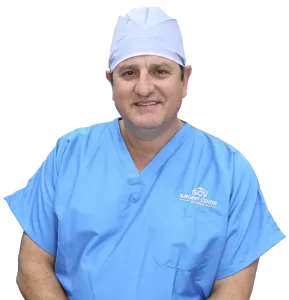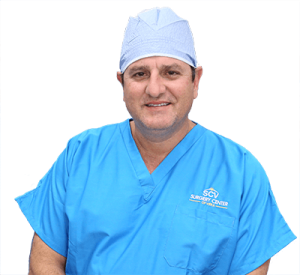Pain above the upper medial angle of the scapula is known as Levator Scapulae Syndrome. One of the most prevalent muscle problems is levator scapulae soreness. The long levator scapulae muscle, which runs down the side of the neck and into the shoulder, is frequently one of the muscles involved when the neck becomes stiff or tight due to a muscle strain.
The superficial layer of the back musculature is made up of various muscles, including the Levator scapula. This muscle is engaged in basic scapula movements and regulates neck mobility and upper back posture. While the levator scapula’s principal function is to elevate the shoulder blade, it is also engaged in various scapula movements, including downward rotation as the arm is lowered after being lifted. The levator scapulae muscle can become irritated and inflamed, resulting in levator scapulae syndrome.
The shoulder blade is referred to as the scapula in medical terms. It’s a triangular-shaped flat bone at the upper section of the rib cage. There are two scapula bones in the human body, one on each side of the spine.
On either side of the neck are the levator scapulae muscles. They connect to the first four vertebrae of the cervical spine and the top angle of the scapula, known as the angulus superior. Between the superior angle and the root of the scapular spine, the levator scapulae muscle runs from C1-4 to the medial aspect of the scapula.
Elevation is a movement that occurs when the levator scap raises the scapula. The scapula can also be rotated downward. The levator scapula muscle raises the bottom tip of the scapula towards the spine by drawing upward from the inside corner of the scapula bone to the outside of the neck, where the levator scapula connects.
Shoulder blade actions are usually included in the overall flexion and abduction motions of the shoulder joint. Flexion happens when either arm is moved forward and upwards, and when the arm is moved out sideways, abduction occurs. The levator scap actively contracts during flexion and abduction. The muscle is also involved in lateral flexion, rotation, and twisting.
The levator scapula’s principal role is to retain the shoulder blade in a configuration that promotes a vertical alignment of the head on the neck and prevents forward head posture when the head extends too far ahead.
However, the shoulder blade is a highly mobile bone by nature. It can be tough to maintain it in a stable condition that will preserve proper neck posture. In many circumstances, the cervical spine will be subjected to dynamic opposing movements that demand the muscles and bones to shift independently and collaborate to keep the activity going. Typing, sitting at a desk, or staring down at a phone are examples of such activities.
Many people also operate in a slouched position that does not provide lumbar support. When the individual’s chair is not flexibly created to ergonomic standards, the effect of such spinal alignment becomes more severe. These postures tend to drive the shoulder blade upward or downward, stretching and elongating the levator scapulae. As muscles lengthen, they also become tenser in order to compensate for the loss of stability. Tension is usually associated with pain and a loss of tensional integrity in the joint complex to which the muscle belongs.
Downward Rotation Scapular Syndrome is a typical clinical finding in people who have painful Levator Scapulae. A position such as long periods of sitting can put undue tension on the upper back muscles. As these muscles stretch, the amount of pressure exerted on them increases. The mid-upper corner of the scapula can also be chronically elevated when the levator scapulae are too tense. This occurs because when a muscle becomes weak due to excess tension, it can begin to trigger a similar effect in nearby muscles, which will also have to over-exert themselves to compensate for the soft spot.
When the arm is elevated, the scapula will have difficulties upwardly rotating as needed if it is kept in a downwardly rotated position. As the arm tries to rise, compression in the subacromial region can occur, causing issues in the glenohumeral joint (shoulder socket). As a result, the early stages of rotator cuff damage are typical in the supraspinatus, infraspinatus, teres minor, and subscapularis, which jointly create a stabilization system for the shoulder socket. When this syndrome goes unnoticed, it can affect the neuromuscular system and cause the arms and shoulders to lose critical motor skills.
Sitting for prolonged periods, especially with bad posture, is the most common cause of levator scapulae syndrome. The different muscles in the neck and back, particularly the levator scapulae muscle, are stressed and irritated by sitting for long periods with bad posture. This continual stress and strain can irritate the levator scapulae, leading it to become inflamed and inflamed over time. Sitting at a computer with your shoulders rounded, creating a ‘hunch back’ position, is a classic example of poor sitting posture. This posture extends the levator scapulae muscle, which can produce irritation and pain if done over an extended time.
An injury caused by daily strain or physical stress could also be the source of levator scapulae tendonitis. This type of strain is defined as increased muscle tightness and tension caused by repeated muscle contractions. It can induce a reduced range of motion in the neck, shoulders, and arms without therapy and tension headaches. Depression, worry, and exhaustion are some of the physical issues that come with it.
Other typical causes of levator scapulae pain are cervical spine dysfunction, repetitive arm motions, falls, and whiplash from accidents and injuries.
The levator scapulae can produce soreness in one region of your body and transmit it to other, vastly disparate sites. The levator scapulae’s main pain zones are the sides of the neck and the upper shoulders. This muscle can also cause discomfort in the shoulder blade and the margo medialis, which is the zone along the inner boundary of the shoulder blade. It can also contribute to deep, achy pain and tightness felt in the neck, over the top of the shoulders, or between the shoulder blades. Patients may likewise experience painful neck and impaired movement in turning the head or lifting the neck from a supine position.
Two trigger points in the lower portion of the Levator Scapulae muscle can cause pain. The lower trigger point is located directly above the superior angle of the scapula, and the higher trigger point is located 1-3 inches above it. Both trigger points are located deep within the upper trapezius muscle and convey pain laterally to the shoulder blade. Patients with mechanical neck discomfort are more likely to have active trigger points. Symptoms of levator scapulae pain might also induce a restricted range of movement, especially reduced cervical flexion and side flexion to the contralateral side.
If you experience pain and discomfort in the neck and shoulder regions, you might be able to temporarily manage them with a combination of massage and hot compress therapy. Because the shoulder and neck are such complicated organs, a skilled, licensed health practitioner should diagnose any pain or dysfunction in those areas. When pain and trigger points are present in the levator scapulae region, a full assessment of the cervical spine is required, as discomfort in this area is frequently transmitted from the cervical spine.
Active and passive range of motion testing of the cervical spine, particularly flexion and side flexion to the contralateral side, are likely to replicate the underlying pain. On examination, the muscle is expected to be tender and have an elevated tone, particularly in the region and referral pattern of the trigger points.
The recommended first line of treatment for levator scapulae pain is to identify and correct any biomechanical issues contributing to the condition, such as neck or shoulder muscle imbalances, postural issues, or thoracic mobility problems. These issues are the most common causes of increased tension on the levator scapula muscles.
Likewise, physical treatment may assist patients in reducing the amount of stress exerted on the levator scapulae and create better posture habits. Patients may work on the levator scapula and the other shoulder, neck, and upper back muscles for strength and flexibility.
Electrical stimulation is another therapy method that might help to relax the tight muscle. A small quantity of current is applied to the strained muscle. Similarly, osteopathic adjustments can be made anterior to posterior or lateral to medial, depending on the position of the damaged muscle. There are also a variety of over-the-counter pain medicines that can help patients manage discomfort.
Stretching the Levator Scapulae and accompanying muscles, such as the upper and lower trapezius, can help relieve discomfort, improve range of motion, and improve the patient’s overall quality of life. This gentle exercise can relieve a tight or stiff muscle, and performing it regularly can prevent neck pain from reoccurring.
Tilting the head at a 45-degree angle while simultaneously lowering the opposite shoulder is the most effective approach to stretch the levator scapulae. One hand can be brought up to the back of the head and gently pulled down a little more to improve the stretch. Hold the stretch for at least 30 seconds on each side.
Most experts advocate stretching this muscle group a few times per day, in the morning and afternoon. Some people may benefit from repeating the stretch more frequently, mainly when neck stiffness initially arises. The levator scapulae stretch can be done in a variety of ways. The method for performing the levator scapulae stretch may vary depending on the environment or what space is available. It may be simpler to complete the levator scapulae stretch when seated in an office setting, but it may be preferable to do so while standing at home. The main essence of the stretch is to extend the levator scapulae muscle without allowing the shoulder to slip upwards. As long as this purpose is achieved, all the diverse positions accomplish the same effect of stretching the levator scapulae muscle.
An avoidable risk factor that can cause inflammation in the levator scapulae is lifting constant and heavy weights. Because these actions force the shoulders downward, lifting and hauling high weights is bad for the shoulders and the levator scapulae. The levator scapulae will contract in an attempt to maintain the shoulders in place by stabilizing them. When the weight is excessive, and the tension becomes prolonged or repetitive, the muscle stiffens chronically and can cause pain.
Posture is another critical component of a healthy neck and spine. Due to spending many hours at a desk or looking down at a screen, many individuals develop poor posture. The best way to correctly align the neck and spine is to position the ears directly over the shoulders while keeping the back and pelvis in a neutral setting. For individuals who work at a computer, it is essential to change sitting positions frequently. If you happen to have a standing desk, make sure to place your screen higher than eye level to avoid the tendency for the weight of your head to fall forward. It is also ideal to build the habit of taking frequent small breaks to walk around and perform light stretches.
If you suffer from levator-scapulae tendonitis, Deuk Spine Institute is here to help. Our patient services team is standing by to answer any questions you have and help you book an appointment. Give us a call at (321) 255-6670 or fill out the form below and get started towards living a pain-free life!

